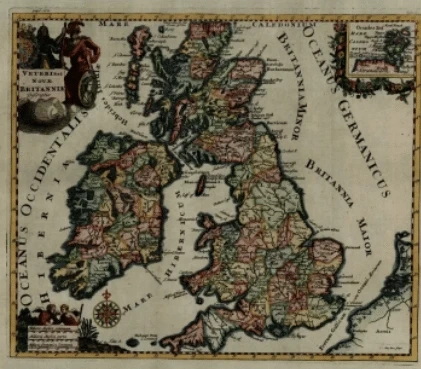In the words of American geologist Daniel F. Merriam, “Maps are a universal medium for communication, easily understood and appreciated by most people, regardless of language or culture.”
Maps are usually printed on paper, and over time the paper starts to show signs of wear, tear, and aging. It is common knowledge that any form of information printed on paper is subject to bad handling and improper storage, and this is of no exception to maps. The outer edges are frayed, torn, or folded and the paper is stained.
In the early 18th century maps were drawn on paper rags which had a strong fiber base content. This material was low in acidic content, unlike its modern counterpart. It was during the industrial revolution paper was introduced; it was gotten from wood-pulp in trees and was a less expensive way of producing maps. Although the wood pulp was high in acidic content and was therefore vulnerable to brittle stains due to the extreme acid. This was why early maps lasted longer than modern forms of maps and were a lot easier to preserve. Another reason why 18th – 19th-century maps were in better condition was that the owners then valued the maps more than they do today. Because back then, these maps were the only way to navigate your way on journeys and long distances, especially by sea or land. These maps were kept in libraries and government buildings and were only brought out in times of utmost need. They were also handled by only a select few thereby preserving it even further because the fewer people handling a map, the higher its chances of preservation.
CONDITIONS AFFECTING OLD/ANTIQUE MAPS
One of the main conditions that plague antique maps is Foxing. This is evident in old maps that have been stored in damp and humid environments or storage areas. It is usually in the form of a series of brown dots. It is a type of fungi that grows on paper and ultimately destroys the fiber base of the paper if left for too long and without treatment.
Another condition is mold spores, and these can be found in storage airs or environments where the air is still. The spores react violently with the acidic content of the paper.
Larvae and worms are other types of conditions that affect old maps. This is usually evident in old sea maps that have been exposed to the sea’s atmospheric properties, which are also where larvae breed. These properties draw the larvae, and they then chew holes into the map.
One other condition is called offsetting. This happens when the oils in the inks used to print paper were not allowed to completely dry and therefore the contents of the paper would then be transferred to the neighboring sheet of paper bound next to it. This was during the early days of printing.
As it is with paper in general, moist or wet conditions, large temperature fluctuations, UV light, oxygen in the air, are other conditions that can add to the degradation of the paper itself or the pigment or dye in colored maps. Aside from handling abuses or crayon or ink markings, most condition issues are caused by these environmental factors.
HOW TO STORE MAPS PROPERLY AND SAFELY
Antique maps should be preserved in typical room-temperature and humidity conditions; this means they should not be kept in hot attics, damp basements, and next to heat sources like a furnace or boiler room.
It is most preferred to keep the maps laid flat in boxes or shallow drawers and should also be gently rolled in a tube that is at least three inches in diameter (although this is not particularly ideal).
And very importantly, longer-term direct physical contact with the map should be only by archival, acid-free materials, an excellent option among these being polyester (e.g., Mylar) sleeves or acid-free paper. Avoid direct sun exposure and handling with dirty hands. Also, fewer people should be allowed to handle the maps.
WHAT TO AVOID IN CARING FOR ANTIQUE MAPS
Here are simple things to avoid when caring for old maps without contacting professionals or using costly methods:
Always use “Document Repair Tape” to repair minor tears instead of using ordinary tape that causes yellowing.
Use “Document Cleaning Pad” to erase or remove stains on your maps. Avoid using ordinary erasers as they would not only remove the stains but also the ink on the map.
Do not use an adhesive to print or mount a map. This would cause stains and destroy the fibers in the paper.
Never use your bare hands to handle a map; always use a pair of gloves.
Do not roll up your maps meant for shipping or storage. It is best to keep in flat cabinets.


